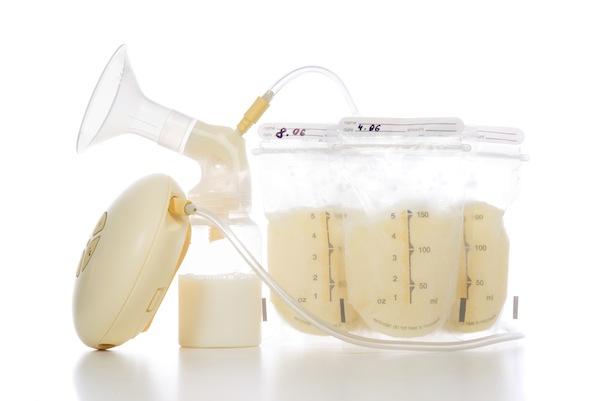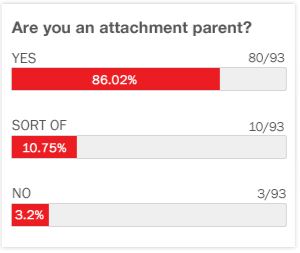
When Denene Millner returned to work after having her daughter twelve years ago, she quickly discovered that pumping wasn’t going to be easy. “I worked at a place that had two smoking rooms, but nowhere for me to pump outside of the bathroom. And so I made the very brave and crazy decision to pump in my car, out on the corner of 33rd and 10th in New York City,” the award-winning journalist and founder of MyBrownBaby.com tells Kids in the House. “So anybody and their mama could see me and my goodies and all of the milk coming out, but it was the only way that I could do what I needed to do for my baby and for myself. And I was incredibly dedicated to making sure that she was fed breast milk through the first year of her life. And if that meant that I needed to sit in the car and make that happen, then so be it.”
Things have changed since the days Millner was stuck in a hot car on the Manhattan streets. “The beautiful thing is, that we live in a society now with leaders like Michelle Obama, who is really going out of her way to open the doors so that breastfeeding working moms have more options when it comes to feeding their kids. Some of the rules that were recently instated include making sure that employers must make a room for breast-feeding moms, a special room where they can go and pump, and there's new rules that allow for tax credits for breast pumps and that makes it so much easier… it opens the door for more moms to be able to feed their children even if they do have a job and so I'm really, really excited about that,” says Millner.
Still, many moms who are returning to work may not know what their legal rights are when it comes to maintaining breastfeeding. And in a country where some women get a mere 4 weeks of maternity leave, it’s especially important to know how the law supports you. “Your legal rights when it comes to pumping breastmilk when you return to work really depends on the state in which you work, and the company for which you work,” explains attorney Lisa Pierson Weinberger, the founder of Mom, Esq., a legal practice in California dedicated to helping parents understand and maximize their maternity leave benefits. “The reason for that is because only about half of the states have laws on the books that protect a woman's right to take time away from her day to pump milk. Those laws, essentially, provide for women to reasonable break times in a clean environment, that is not the bathroom, in order to take care of this need. If you don't work in one of those states, there is also a recently enacted Federal law that provides a similar right to everyone in the country. However, that only applies to companies that employ at least 50 employees.”
To maximize your chances of having a stress-free pumping experience, our Kids in the House experts recommend doing the following:
- Be proactive. “What I recommended to any mother who knows that she has to go back to work, and knows that she will need to pump at work, is to touch base with Human Resources in advance, before returning to work, to find out what arrangements can be made to make this an easy process when she gets back to the office,” says Weinberger.
- Know the business case for breastfeeding. You may need to convince your employer that your right to pump is also in his or her best interest. “With some 30 million moms in the workplace, smart businesses know that supporting the choice to breastfeed can increase employee retention, productivity, and engagement,” says Barbara Turvett, executive editor of Working Mother Magazine. “Breastfeeding promotes healthier babies, which makes for happier moms and better employees.”
- Acknowledge your insecurities, and work through them. “The first time I had to walk into my office building toting my very demure, black bag which my pump was in, I was self-conscious,” admits Monica Gregory, a working mom of three. “I had to get over it because it was for my baby and it is what I wanted to do. Honestly, my employer didn't have a problem with it. There were people all over my office who were taking breaks to chat on the telephone or have a cigarette. I was going to take my breaks to pump for my baby.”
- Have a back-up plan. If your employer is making pumping difficult, there are people who can help. “If you feel that you have been discriminated against, to ensure your rights there is a group that has been formed nationally called First Right,” says infant feeding specialist Cynthia Epps, MS, IBCLC. “You can reach them at www.firstright.org. This is a group of lawyers that are there to support and protect your right to breastfeed, and they can give you free legal advice.”
- Keep a sense of humor about it all. Pumping at work can be awkward at times. Third-grade teacher Kristy King found herself in some interesting situations while pumping for her daughter. “One day, I was wearing a low-cut dress and a tank top underneath. After pumping, I had to make a phone call. I wasn't paying attention. My recess ended, and I had to go back to my classroom. One of my students looked at me with a strange expression, and said, ‘Mrs. King, your bra!’ And it turned out my bra was fully exposed. I hadn't pulled up the tank top underneath my dress. Another little boy saw, and said, ‘Mrs. King, that's disgusting! It's your bra.’”
Unfortunately, third graders aren’t the only ones who are squeamish about breasts, and many women report that they have to endure discrimination when combining breastfeeding and work. “Bosses and colleagues that judge (pumping moms) are doing a disservice not only to their own company, but to the economy and society as well,” Turvett laments. “My advice to working moms who need to pump at work: Just do it knowing that the law and nature are on your side. Judgmental colleagues, just need to get over themselves.”
*Originally published on Mothering.com










